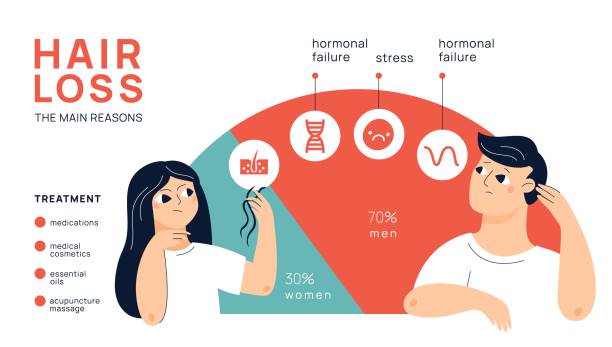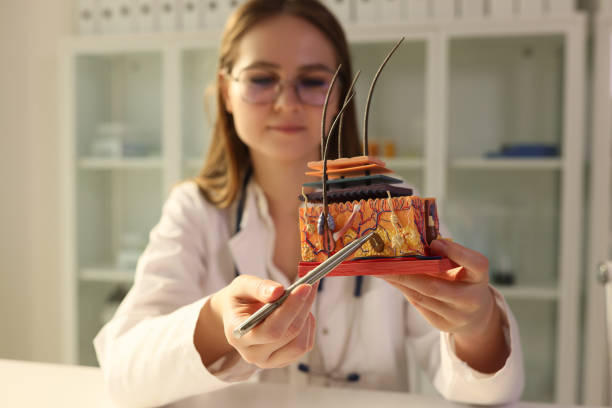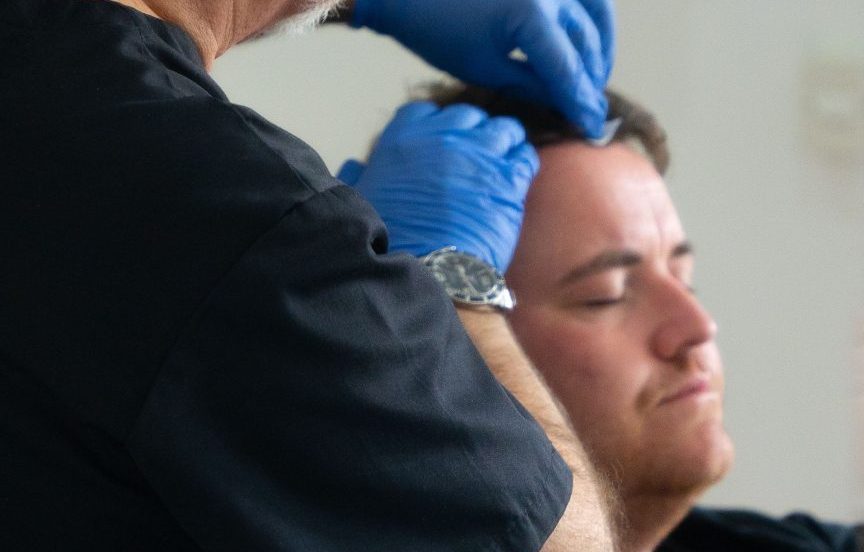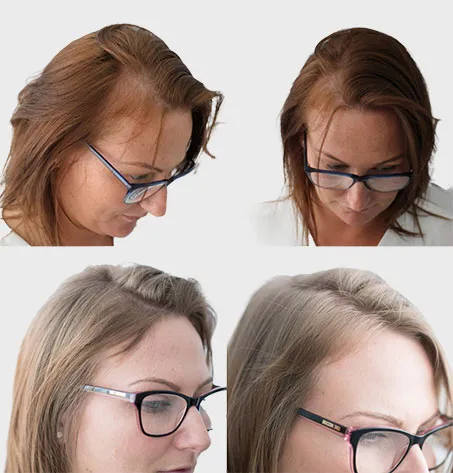
The Difference Between Hair Transplant for Men and Women
The Difference Between Hair Transplant for Men and Women
Explore the key differences between male and female hair transplants, including variations in hair loss patterns, surgical techniques, and recovery processes to make informed decisions.
Donor Area
In men, the donor area—usually the back and sides of the scalp—is typically unaffected by androgenetic alopecia
Aesthetics
Hairline Design
The aesthetic goals for hairlines differ significantly between men and women. Men often want to restore a more defined
Scalp shaving
Most hair transplant procedures require shaving the donor area. While male patients generally accept this
Hair Transplants: What Men and Women Need to Know
No one wants to talk about hair loss, but so many of us think about it more often than we’d like to admit. Whether spotting extra strands in the shower or noticing your part getting wider, it can mess with your confidence.
And while people often assume it’s just a “guy thing,” women deal with it too, just in quieter, often more emotional ways. The good news? Hair transplants aren’t just for celebrities or men anymore. They’re becoming a viable solution for anyone ready to take back control.
But here’s the thing: men and women experience hair loss very differently, which means their treatment journeys aren’t the same either. In this guide, we’ll break down the key differences between hair transplants for men and women, from the causes to the techniques, recovery, and even where to go if you’re considering taking the next step.
Why Do Men and Women Lose Hair Differently?
Timing is everything when it comes to PRP and hair transplants. Should you get PRP before, during, or after your transplant?
Let’s break down the best schedule for incorporating PRP into your hair restoration plan.
According to Patient UK, at 35, a significant percentage of males have notable hair loss. That figure jumps to 50% by the time they hit 50, and by the age of 80, around 70% of men have some balding. Those numbers say a lot, but what’s behind them can vary from person to person, especially when we compare men and women.
Ut elit tellus, luctus nec ullamcorper mattis, pulvinar dapibus leo. Lorem ipsum dolor sit amet, consectetur adipiscing elit. Ut elit tellus, luctus nec ullamcorper mattis, pulvinar dapibus leo.

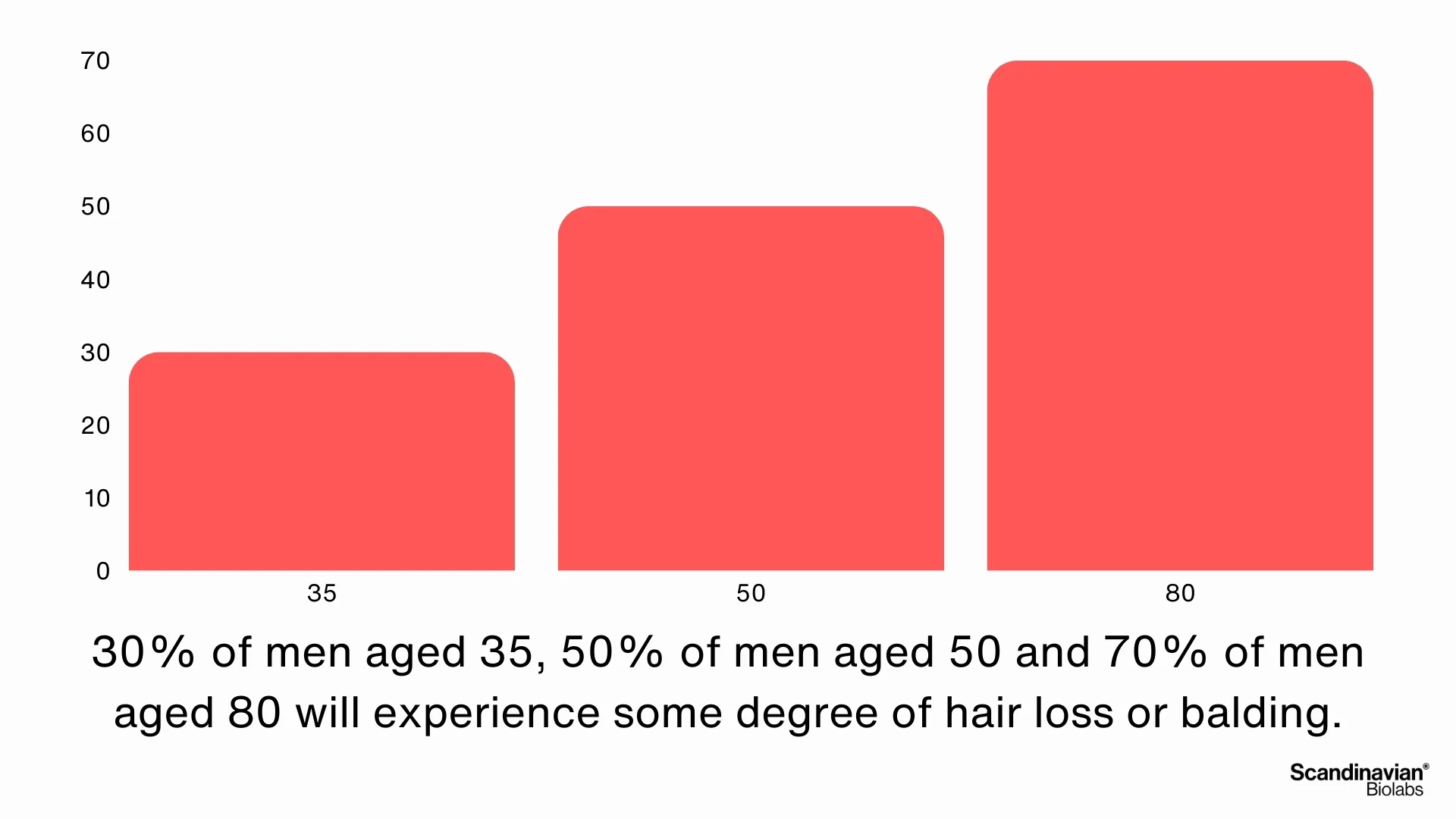

Common Causes of Hair Loss in Men
The main root cause of hair loss in men is androgenetic alopecia, commonly known as male pattern baldness. This condition is largely hereditary and affects many men by the time they reach middle age. The pattern is predictable, usually with thinning at the crown and a receding hairline, ultimately resulting in baldness.
Other causes include stress, poor nutrition, medications, and underlying health issues. However, male pattern baldness remains the most prominent factor driving men to consider hair transplant procedures.
Common Causes of Hair Loss in Women
The causes of hair loss in women are more complex and often less predictable. Androgenetic alopecia is a common pattern of hair loss that affects women but presents differently. Instead of receding hairlines or bald spots, women typically experience diffuse thinning across the scalp.
Hormonal fluctuations due to pregnancy, menopause, polycystic ovarian syndrome (PCOS), and thyroid issues can contribute to hair loss. Stress, poor diet, tight hairstyles, and excessive use of heat or chemicals also play a role.

Patterns of Hair Loss – How They Differ by Gender
You might think all hair loss is the same, but how it appears and progresses differs greatly between men and women. These patterns play a big role in determining the most suitable treatment approach.
Male Pattern Baldness
Men typically lose hair following a clear pattern defined by the Norwood scale. It usually starts with thinning at the temples and crown and can progress to complete baldness at the top of the head. Men are generally considered better candidates for hair transplant surgery because of the predictability and stability of donor areas at the back and sides of the scalp.
Female Pattern Hair Loss
On the other hand, women experience hair loss characterised by the Ludwig scale, which describes a diffuse thinning over the top of the scalp while maintaining the frontal hairline. Because the thinning is often widespread, identifying a stable donor area becomes more challenging in women. This makes the planning and execution of hair transplants in women more complex.
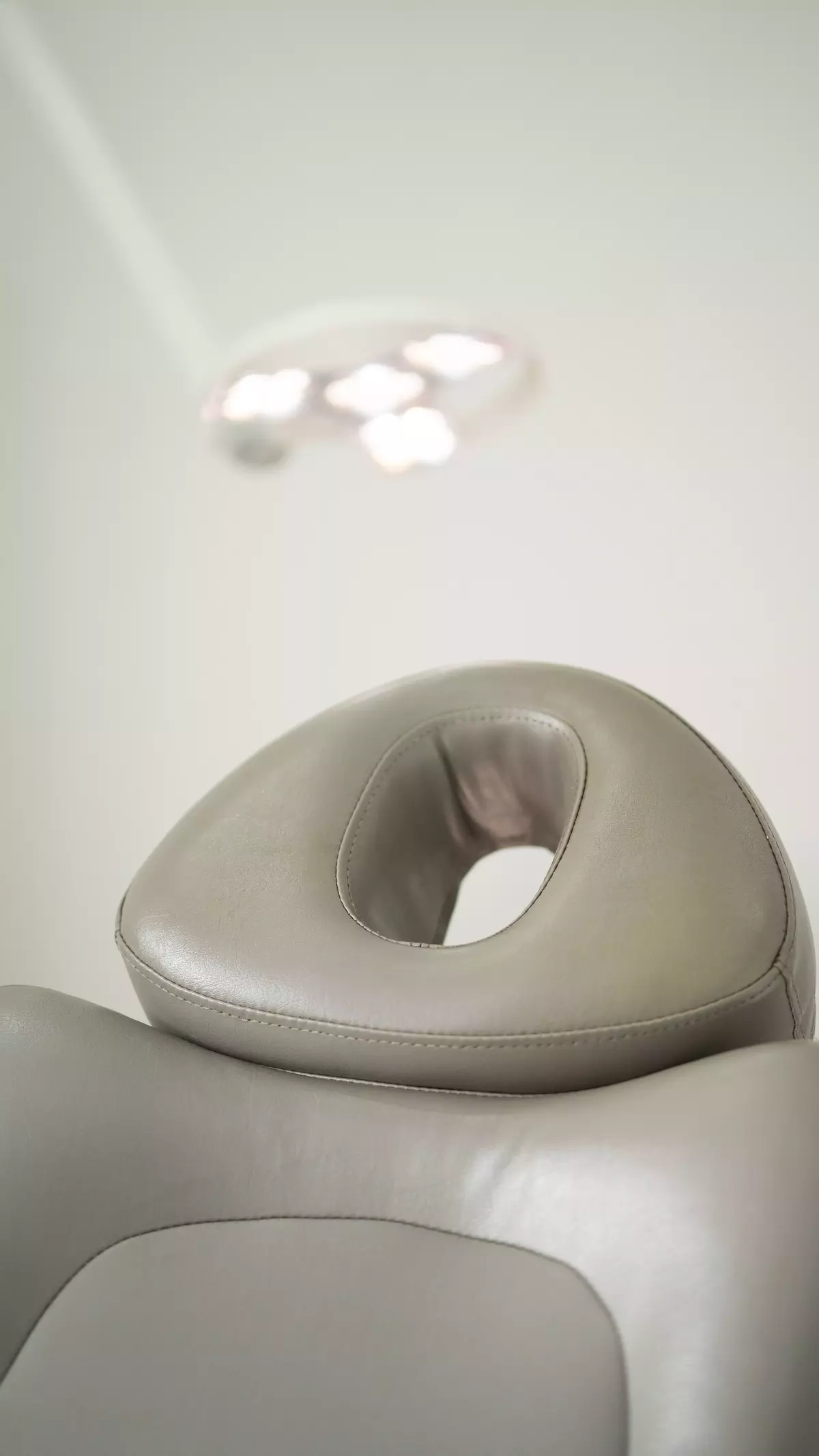
Are Hair Transplants Effective for Both Men and Women?
Hair transplant effectiveness isn’t one-size-fits-all. It’s helpful to explore what works for men and what delivers the best results for women.
Hair Transplant Success in Men
Hair transplants can be successful for both men and women, but the outcomes vary due to differences in hair loss patterns and scalp conditions. Men often achieve fuller coverage because they typically retain strong donor hair at the back and sides of the head.
Women may not always be suitable candidates for traditional transplant techniques if their donor areas are also thinning. However, many women still achieve satisfying results with advanced diagnostic tools and personalised treatment plans.
Key Differences in Hair Transplant Techniques for Men and Women
Even though the overall technique might seem the same, important gender-specific adaptations exist. Understanding these variations helps explain why each individual's process may differ.
In men, the donor area—usually the back and sides of the scalp—is typically unaffected by androgenetic alopecia, making it ideal for harvesting hair follicles. Women, however, may have diffuse thinning, meaning their donor areas might not be as reliable. Surgeons must assess sufficient density and quality in the donor site before proceeding.
The aesthetic goals for hairlines differ significantly between men and women. Men often want to restore a more defined, angular hairline, while women prefer a soft, rounded hairline that maintains their natural look. Designing a feminine hairline requires greater precision and artistic skill to avoid an unnatural appearance.
A Gender-Specific Concern
Most hair transplant procedures require shaving the donor area. While male patients generally accept this, many women find the idea distressing. To accommodate this, some clinics offer unshaven or partially shaved FUE procedures for women, allowing follicle extraction without a noticeable haircut.
Types of Hair Transplant Procedures Used for Men and Women
Hair transplants can be carried out using different methods; some are more suited to one gender than the other. Let’s look at the options available and how they differ.
FUE (Follicular Unit Extraction)
Follicular Unit Extraction (FUE) includes taking individual hair follicles from the donor region and relocating them to places that are balding or thinning. It leaves minimal scarring and a quicker recovery time, making it popular with both men and women. FUE is particularly favoured among women because it can be adapted for unshaven techniques.
FUT (Follicular Unit Transplantation)
FUT, or the strip method, involves removing a strip of skin from the donor area, from which follicles are dissected and implanted. While this method can yield more grafts, it leaves a linear scar and involves a longer recovery period. It is more commonly used in men who require extensive coverage.
Recovery and Aftercare – Gender Differences
Recovery experiences after the procedure can differ between men and women. Here’s what to expect once the transplant is complete.
The recovery process for hair transplants is relatively similar, but women may take longer to resume their usual styling routines due to their scalp and hair texture sensitivity. Men who often keep shorter hairstyles can return to normal grooming practices more quickly.
Post-transplant concealment is another area where differences arise. Men might opt to shave their entire head to even out the appearance. Women, however, may rely on strategic hairstyling, scarves, or wigs to cover treated areas during recovery. Emotional support and reassurance are often more critical for women during this period.
Cost of Hair Transplants for Men vs. Women in the UK
Wondering how much a hair transplant will set you back? Pricing varies widely and can even differ based on gender. Let’s break it down.
Factors That Affect Pricing
The cost of a hair surgery varies based on numerous factors.
- Number of grafts required
- Technique used (FUE vs. FUT)
- Surgeon’s expertise and reputation
- Clinic location (e.g., London, Glasgow, Manchester)
Why Women’s Hair Transplants May Cost More
Due to the complexity and customisation required, hair transplants for women can be more expensive. The unshaven FUE method, artistic hairline design, and longer procedure time increase costs. In some cases, women also require more extensive diagnostic consultations before surgery.
Expected Results: What Men and Women Can Realistically Achieve
If you’re considering a transplant, it helps to know what to expect realistically. Results can be rewarding, but they look different for everyone.
Differences in Hair Density and Growth
Men aim to restore density to specific areas like the crown or temples, while women often seek a general improvement in volume and fullness. Because of these different objectives, success is measured differently. Men may see a dramatic visual change, while women might notice more subtle but equally satisfying improvements.
Timeframe for Visible Results
Hair transplants do not offer immediate results. Hair typically grows three to four months after surgery, significantly improving after six to twelve months. Women may experience a slower initial growth rate due to hormonal influences and their finer hair texture.
When is Hair Transplant Recommended
Not everyone is the right candidate for a transplant. Here’s when it’s likely most effective for men and women.
Ideal Candidates – Men
Men with stable donor hair and a predictable pattern of baldness are ideal candidates. Those with receding hairlines or thinning crowns benefit most. Candidates should be in excellent overall health and have realistic expectations.
Ideal Candidates – Women
Women with localised hair loss, such as traction alopecia, scarring, or hairline recession, are often good candidates. Women seeking hairline-lowering procedures or those who have retained a strong donor area are also suitable.
Alternatives to Hair Transplant for Men and Women
Surgery isn’t the only option. If you’re not ready or not eligible, there are other effective routes to explore

Non-Surgical Treatments
- PRP (Platelet-Rich Plasma): Stimulates natural hair growth using the patient’s blood.
- Minoxidil: Over-the-counter topical treatment effective for both sexes.
- Finasteride: Oral medication for men, not typically recommended for women due to hormonal side effects.
Hair Systems and Cosmetic Solutions
Non-surgical solutions such as wigs, hair toppers, and scalp micropigmentation can provide immediate results and are suitable for those not eligible for surgery. These options are particularly useful for women with widespread thinning.
Selecting the Right Hair Transplant Clinic in the UK
Finding the right clinic can make or break your hair transplant journey. Let’s talk about what to look for when making your choice.
What to Look for in a Clinic
When selecting a hair transplant clinic, consider:
- Surgeon’s experience and specialisation in male or female transplants
- Authentic before-and-after galleries
- Transparent pricing and detailed consultation process
- Positive patient reviews and testimonials.
Why Choose Merchant City Medical Group for Your Hair Transplant
Suppose you’re looking for a clinic in the UK that specialises in male and female hair restoration. Merchant City Medical Group might be your perfect match.
1. Specialists in Male and Female Hair Transplant
Merchant City Medical Group is renowned for offering tailored hair surgery solutions for both men and women. Their team understands the nuanced differences between male and female hair loss and provides individualised treatment plans.
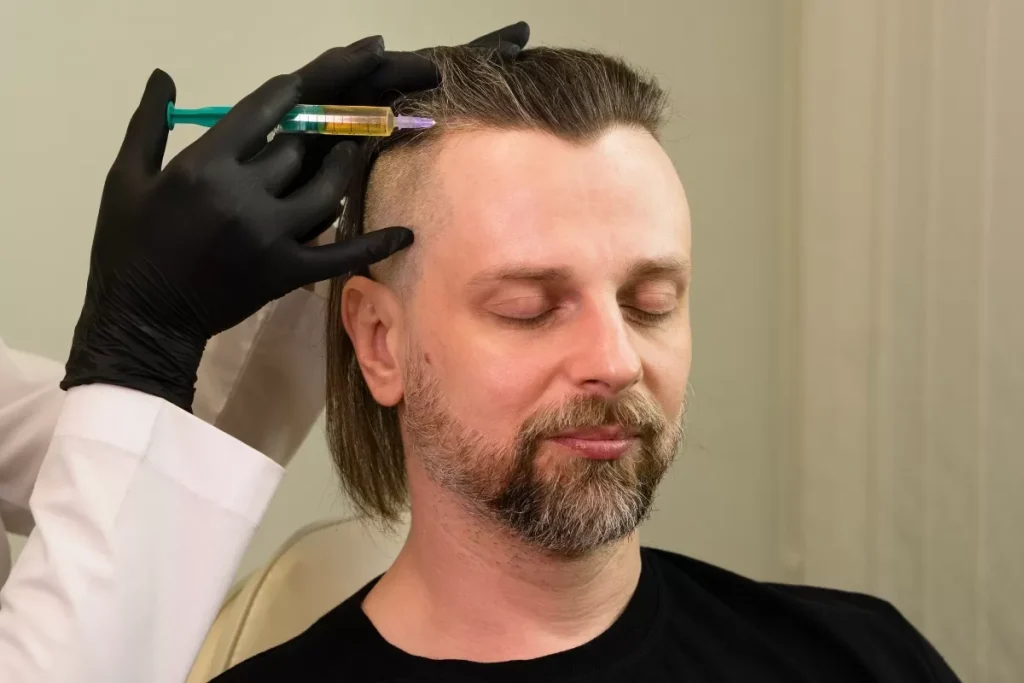
2 . Experienced Surgeons and Patient-Centric Care
The clinic employs some of the UK’s most experienced hair transplant surgeons, ensuring every procedure is performed with precision and artistry. From the initial consultation to aftercare, patients receive comprehensive support.

3 . Clinics Across the UK
With Glasgow, Manchester, and London locations, Merchant City Medical Group offers convenient access and consistent care nationwide. Their state-of-the-art facilities and transparent pricing make them a preferred choice for many.
4 . Book a Free Hair Transplant Consultation
Whether male or female, understanding your hair loss and exploring your options is the first step to transformation. Book a free consultation with Merchant City Medical Group today and take control of your hair journey.
Conclusion
While the end goal of hair transplantation is similar for both men and women—to restore confidence and a natural-looking head of hair—the methods and considerations differ significantly. From hairline design to recovery and cost, gender plays an important role in the hair restoration journey. By choosing a reputable clinic like Merchant City Medical Group, patients can ensure they receive expert care personalised to their unique needs and aesthetic goals.


